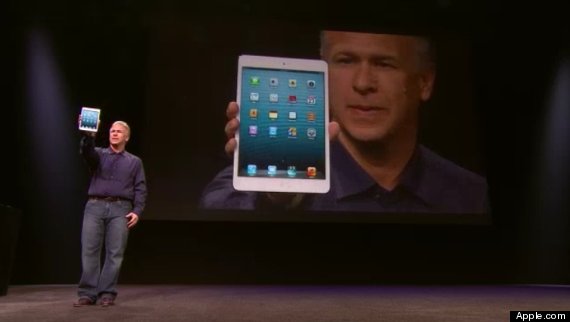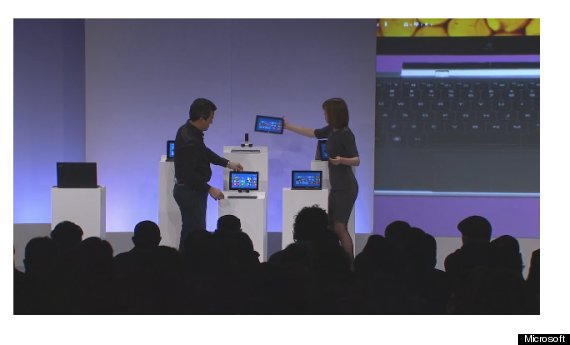
The biggest difference between Apple and Microsoft? It doesn't take a long-winded or in-depth analysis of the companies' product sales. No, the biggest difference between the Cupertino and Redmond giants can be summed up in just a couple of pictures.
This week included high-profile press events hosted by both Apple and Microsoft, the companies behind two operating systems that have reigned supreme for the past 30 years. The events were held on different coasts (Apple in San Jose, California, and Microsoft in New York City), though the starkest contrast between the two had nothing to do with geography, but rather the presentation and the optics of new products onstage, which underscore the difference in their respective strategies.
Here, first, is a scene from Apple's iPad mini event, the moment after Apple marketing chief Phil Schiller unveiled Apple's new, smaller tablet:

The stage is totally clear, and your eyes are focused on only one device: The new iPad mini.
Now, here's a scene from Microsoft's Windows 8 launch event, which is representative of the general mood and view for the audience, both in the building and watching on the live-stream:

What I want to highlight in this image is the sheer multiplicity of devices on display, the several different focal points and options for objects to look at for the viewer.
Now, this difference is almost as old as the rivalry between Microsoft and Apple: Microsoft chose to license out its operating system to different computer manufacturers, which resulted in several different machines running Windows, while Apple chose to keep its operating system to itself and to build its hardware on its own. This is an old story, but one that is still relevant in the ever-escalating war between Apple and its Mac OS, and Microsoft and Windows 8.
The benefits of each approach are obvious, and each has rewarded its respective corporation at various points in the previous decades. With Apple, and the one-size-fits-all approach, you're able to emphasize a single product and explain in detail its specific benefit while convincing the listener of its supremacy over anything else. With Microsoft, and its over 100 Windows 8 devices coming soon to market, you allow the shopper to decide on the device that's best for his or her specific needs, with dozens of options and customizations available.
The disadvantages are just as obvious and can be found elucidated by any passionate partisan booster in any comments section on any tech site on the Internet. Apple limits your choices down to a lonely, frustrating One; shopping for a Windows PC is confusing and time-consuming given all of the options, and the level of support and tech help suffers.
Pros and cons aside, the contrast between the two companies exists and will continue to define the great gulf between Microsoft and Apple's strategies (Even with Microsoft's Surface tablet, whose public presentations have thus far much more closely resembled a hyper-focused Apple event). It's a difference you can see and a difference that endures.
